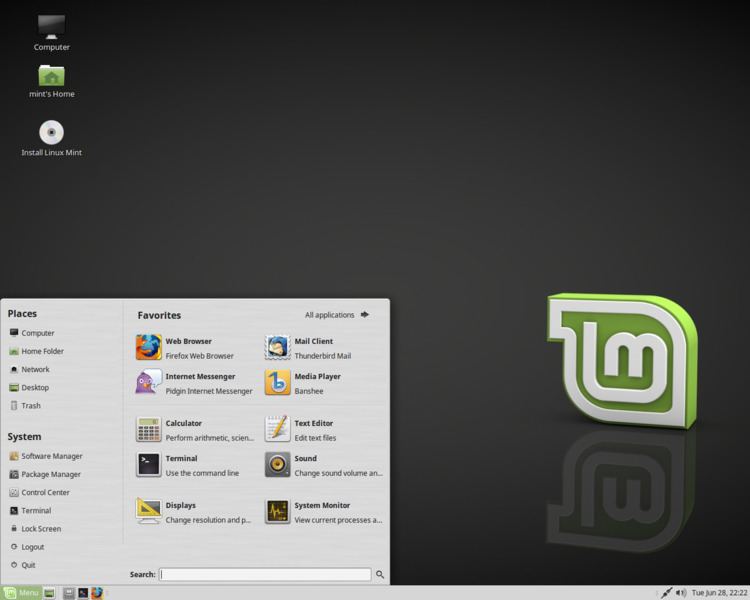 | ||
As of 2014 there had been two Linux Mint releases per year, about one month after the Ubuntu releases they were based on. Each release was given a new version number and a code name, using a female first name starting with the letter whose alphabetical index corresponds to the version number and ending with the letter "a" (e.g., "Elyssa" for version 5, "Felicia" for version 6). There is also an OEM version for ease of installation for hardware manufacturers.
Releases are timed to be approximately one month after Ubuntu releases (which in turn are about one month after Gnome releases and two months after X Window System releases). Consequently, every Linux Mint release comes with an updated version of both GNOME and X and features some of the improvements brought in the latest Ubuntu release. Support for most releases is discontinued two months after the next release, but since the mid-2008 v5 every fourth release has been labeled a long-term support (LTS) version, indicating that it is supported (with updates) for longer, three years for v5 and v9, and five years thereafter.
Linux Mint 17 "Qiana" LTS was released on 31 May 2014, remaining current until the end of November 2014 and supported until April 2019. In mid-2014 the successor to 17 Qiana was announced to be 17.1 Rebecca; the development team said that from a technical point of view Linux Mint was no longer tied to the Ubuntu schedule, so it could be released at any time, although the six-month cycle provided rhythm, leading to a late November 2014 target. Linux Mint 17 LTS would be the first release of the 17.x series, and for two years applications would be backported to 17.x, with security updates until 2019.
Linux Mint Debian Edition, not compatible with Ubuntu, is based on Debian and updates are brought in continuously.
